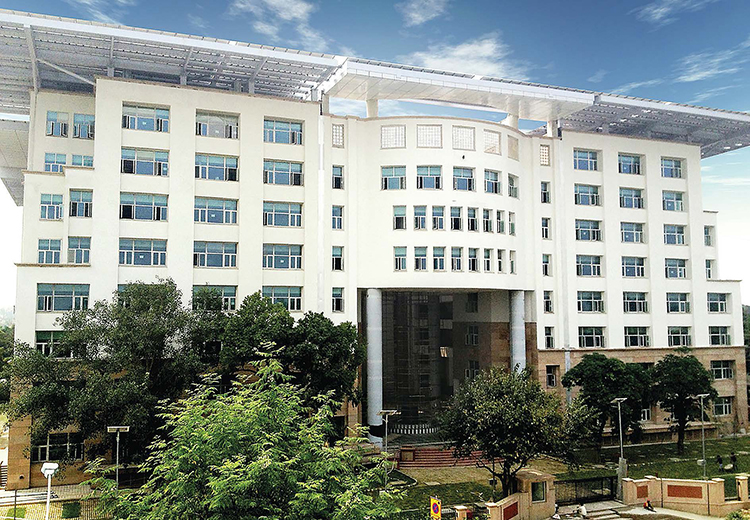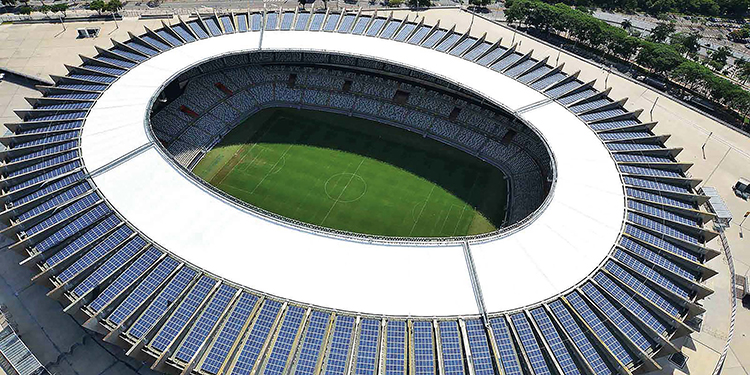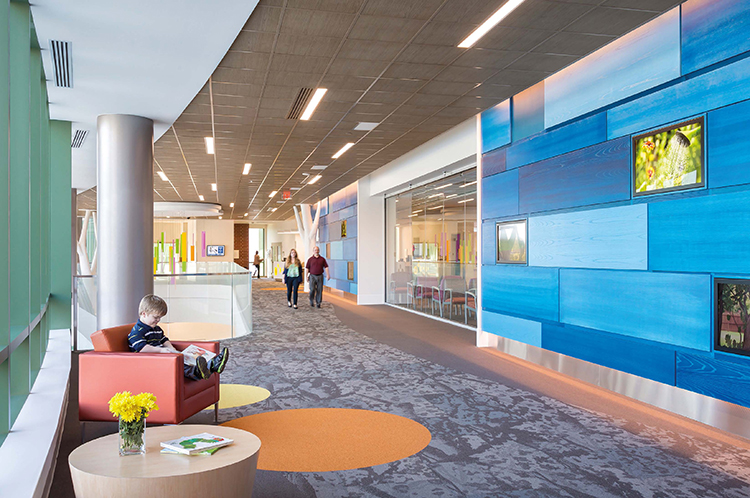With estimated overall costs of about $135 billion for the insurance industry, 2017 represented the bleakest year in their history, mainly because of the compensation for damages caused by Hurricane Harvey, Irma and Maria, by the earthquake in Mexico, and floods as a result of exceptionally heavy monsoons that hit Southeast Asia. Also taking into account uninsured damages, and thus uncompensated, the already humongous figures – calculated by Munich Re, the world’s top German company in the reinsurance sector – soared with an almost twofold increase to $330 billion. “The 2017 calamitous events are only a taste of what the future has in store,” claims Torsten Jeworrek, the man in charge of Munich Re’s global sector for reinsurance. “Even if not all events are ascribable to climate change, our experts tell us that their frequency is bound to increase.”
The report presented by Moody’s in November 2017 is quite similar. Here, the rating company warned the Federal States and the US municipal administrations about the economic impact of the growing effects of climate change, in particular soaring temperatures and the rise of ocean levels, stating that for those who will not adopt adequate mitigation and adaptation strategies climate risk is bound to take an increasingly heavy toll in the form of negative credit ratings.
 |
|
Indira Paryavaran Bhawan, Ministry of the Environment and Forests, Delhi India. ©Government of India, Ministry of Urban Development, Central Public Works Department
|
Globally, the so-called built environment is responsible for over one third of energy consumption and for about 33% of climate-changing emissions. This sector’s impact on climate change and also its risk exposure, has put sustainable construction at the centre of strategies for greenhouse gas emission reduction (mitigation) and damage containment (adaptation), in a holistic approach to the concept of future-proof construction; associating the energy-environmental quality of buildings to the wellbeing of those living and working in them, environmental resilience, and the maintaining of real estate value. Sustainable building is thus conferred with the role of powerful driver of the circular economy in order to diminish the production of demolition waste, consumption of virgin soil and resources and to promote soil regeneration, recovery, recycling and reuse of materials.
As Felix Jansen from DGNB (Deutsche Gesellschaft für Nachhaltiges Bauen – German Sustainable Building Council) summarises for Renewable Matter, “guaranteeing the physical integrity of people with buildings that are able to cope with adverse natural events, is a necessary but not sufficient requisite for future-proof construction. The quality of indoor spaces must be taken into account, as well as that of materials used which must not contain harmful substances for health. “Furthermore,” he points out that in line with the purpose of the circular economy, “planning should consider the possibility of a different future use of the building once it has achieved the function for which it was conceived and enable the complete recovery of materials used.”
To test and apply the principles of the circular economy to sustainable building, the UKGBC (The Green Building Council for the UK) launched the ‘Circular Economy: Partnership opportunity 2018-2020’ project, aimed at defining optimal flows of materials and business models for truly regenerative and circular buildings. This will be achieved in three stages: first, raising awareness with sector players and analysis of case studies; second, optimisation of material potential for the entire duration of a building’s life cycle which will be carried out in a building site in factories that are manufacturing construction materials and in waste management sites; third, the government will be informed on what has been learnt within the project in order to promote the definition of new strategies and new industrial standards.
The BAMB (Building as Material Banks) is another project gravitating around the circular economy. It is co-funded by the European Union with almost €9 million within the Horizon 2020 programme (see box).
Homes as Material Banks
To revert rubble production as a result of renovation and demolition, in 2015 BAMB – Buildings as Material Banks – was put in place: a EU co-funded project with almost €9 million within the Horizon 2020 Programme.
“The holistic approach in several factors such as material health, reversible planning, and the development of new business models supporting economic sustainability; represents one of the most innovative aspects for BAMB,” explains Molly Steinlage, project manager for this initiative.
One of the tools, that the 15 partners based in seven European countries are working on, is the material passport, the ID of 300 different materials and components which will be made available to companies, consumers and professionals on a user-friendly platform. Information will include material characteristics in terms of durability, recoverability and reuse, environmental sustainability and health. “Compared to other data banks – specifies Steinlage – BAMB’s one-stop shop works exclusively towards circularity and supports the other key project target: the development of guidelines of reversible building design.” “Reversible design enables the initial function of buildings to be modified after they complete their life cycle and the recovery, without damaging them, of materials in order to use them in other building contexts,” claims architect Elma Durmisevic from Twente University (in the Netherlands), coordinating this section of the project. “In this way, the single-use, static perspective of a building is bypassed and replaced with a dynamic and flexible approach that takes into account the change of use in relation to changes in the needs of those living and working in the building. Instead, with conventional planning there is only one final possible intended outcome: demolition. In this perspective, ways to combine materials so as to be able to separate them without damaging them are studied. “It is no science fiction: just think of Florence cathedral whose stones can be taken apart without causing any damage to single bricks,” concludes Durmisevic.
Promoting the transition of the construction sector towards sustainability has been the mission of the network of 72 Green Building Councils (of which DGNB is a part) present in the same number of countries for years. Here, all sector players are represented: researchers, investors, public administrations, material manufacturers, designers, authentic guidelines for ex-novo planning, redevelopment and maintenance of buildings as well as assessing performance levels with relevant final certification. In this framework, the most popular protocols are LEED (Leadership in Energy and Environmental Design) and BREEAM (Building Research Establishment Environmental Assessment Method), developed in the US and the United Kingdom respectively, and accompanied by national variants such as DGNB in Germany. “Impact of building on the territory, interference with proximity mobility, energy efficiency and use of renewable sources, savings on water resources, highly-recyclable materials, healthy indoor environments; are the main sustainability areas covered by protocols,” states Marco Caffi, engineer and professor at Brescia University and Director at GBC Italy.
And there is more, “Solutions to improve indoor health showed economic advantages too: in green-certified offices employees are more satisfied, sickness and absences are lower. If reducing water consumption may seem superfluous today, when water shortages occur, buildings able to supply the same sanitary and water services with half the amount of water will contain the damage and will increase their value,” highlights Caffi.
Protocols can be applied to residential and commercial buildings, blocks of flats, neighbourhoods, schools, hospitals, institutional headquarters and sports facilities. GBC developed one for historical buildings, to combine the environmental improvement measures with the historic-architectural protection of buildings. Italy also boasts the only LEED-certified city (gold level) – Savona – for its low-impact energy level and for its air quality improvement measures.
With regards to indoor health, the non-profit organisation International Living Future Institute promotes the green building strict standard “Living Building Challenge” and drew up a “red list” of over 800 chemicals present in construction materials, that are harmful for our health and the environment.
If we look at the leading countries in green building, with reference to LEED, the US are leaders (also because they started 25 years ago), with 30,700 certified projects, and a total of 385 million square metres. “The market has been transformed so heavily that in some sectors eco-materials have completely replaced conventional ones that are more harmful for our health,” writes Calvin Hennick on USGBC+, the USGBC magazine (The US Green Building Council that invented the LEED system).
 |
|
Mineirão Stadium, Belo Horizonte, Brazil. ©Profimedia
|
The top-ten chart of LEED shows that China is recovering fast and in second place, with over 47 million square metres; followed by Canada, India, Germany, South Korea, Taiwan, Turkey, Mexico and the United Arab Emirates (source USGBC). Outside the LEED system, China’s figures soar steeply: “China is embracing green construction extremely fast: China GBC’s Three Star system reached 523 million certified square metres,” reveals Georgina Eldridge from WorldGBC, the global umbrella organisation. In April, WorldGBC signed an agreement with China GBC which was deemed of strategic importance. With over two billion built square metres a year, China is the world’s largest market and is responsible for almost 30% of global greenhouse gas emissions. “We are strongly committed to low-carbon development for the protection of health,” confirmed Wang You Wei, Chairman of China GBC. “Thanks to this partnership we will learn from the world’s best practices, we will share our experiences and will speed up the implementation of our climate change commitments signed in Paris.”
In Europe, the leading countries are the United Kingdom (having adopted the BREEAM certification since 1990) and France; followed by Germany, that with its DGNB national system introduced in 2009, has 2850 certifications and therefore exceeds the 276 of the LEED chart (source: DGNB and USGBC).
“The need to achieve a zero-carbon emission world real estate heritage to contain the 2°C increase in global temperatures by 2050 – ideally 1.5 °C – was top of the agenda at the WorldGBC conference that took place in June, with something completely new compared to the 2017 conference,” claims Eldridge. “WorldGBC presented a document addressing companies so that they embrace ambitious projects to neutralise CO2 emissions in buildings by 2030, encouraging material suppliers to do the same.” During the conference, Dutch company Energiesprong received the 2018 World Green Building Council Award for inventing an innovative energy efficiency programme allowing the construction of external insulation with prefabricated structures that can be installed directly onto facades, thus considerably reducing construction times. With the addition of smart cooling and heating systems, and insulated roofs equipped with solar panels, buildings can fully meet their energy and electricity needs.
 |
|
Kay Jewelers Pavilion, Akron Children’s Hospital, Akron, Ohio, USA. ©Blake Marvin Photography
|
Benefits for health and the environment aside, a question mark on the factors still delaying green construction still remains. “There are legal, financial and technological obstacles” replies Eldridge, “but materials, clean energy sources, solutions for energy efficiency and techniques for passive planning for zero-emission buildings are already available at a competitive cost compared to conventional ones. National governments should raise the bar of environmental standards.” In this framework, Italy shows its peculiar Achilles’ heel, namely “fragmentation of the building sector, whereas green construction needs strong integration amongst customers, designers, and developers, from the planning to the construction phase,” highlights Caffi. “In Italy, public administrations are the ones accelerating the pace, thanks to the approval of minimal environmental criteria in the construction sector, similar to the GBC protocols, which are now binding for the construction of public buildings.”
To reach the greenhouse gas reduction target of at least 40% by 2030 compared to the 1990’s, it is estimated that the European Union will invest about €100 billion a year. Such commitment, as well as public funds, will require private participation. In this regard, in June, a crucial result was achieved: the European Mortgage Federation and the European Covered Bond Council launched the Energy efficient Mortgages Action Plan (EeMAP), a pilot project supported by the 37 major European banks to grant low-interest green mortgages to those wishing to renovate their building or buy a low-energy impact one. The initiative is also backed by 23 organisations, including the GBCs of eleven countries within the EU. As Michael Lewis, CEO of E.ON UK puts it, “Green mortgages are potentially able to trigger a revolution in energy efficiency. We are proud to be a partner of such an initiative since we are convinced that the pilot phase offers an opportunity for banks, utilities and experts in energy efficiency to work together and turn a great vision into reality.”
The pilot phase will last two years. Then, on the basis of the collected data, the standard European mortgage model will be defined. We hope energy efficiency will find a home in millions of houses.
Gbc Italia, www.gbcitalia.org
The Red List, living-future.org/declare/declare-about/red-list
Energy efficient Mortgages Action Plan, energyefficientmortgages.eu
Immagine in alto: Kay Jewelers Pavilion, Akron Children’s Hospital, Akron, Ohio, USA. ©Blake Marvin Photography


